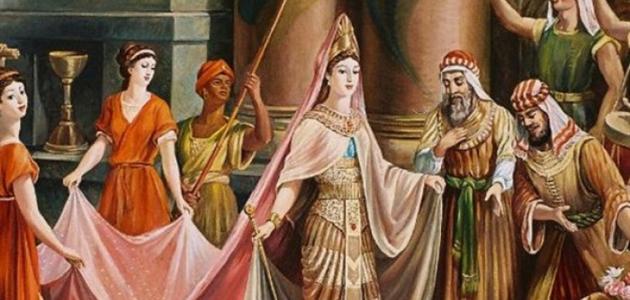الشعوب السامية : التشيع يرث المزيج الإسلامي المسيحي التوحيدي
Shiism
لم تكن تلك القرون من التمدّن والحضارة التوحيدية سائرة بعبثية ، بل كانت تسير باتجاه الاجتماع ، كحتمية تاريخية ، لإنتاج مجتمع جديد ، يدرك ذاته ، ليرث تلك المفاهيم والتعاليم والسلوكيات النبوية .
لقد اجتمعت داخل الإطار ( الشيعي ) مجموعة الامم التي انبثقت عن الحضارة التوحيدية السومرية . وتلك الامم تمثّلت في مراحل حركة التاريخ في فرعين ، تفرّعا لاحقاً فيما هو اخصّ ، أنهما ” الحضارة العراقية ” و ” الحضارة السبئية ” .
وما نقصده بالحضارة العراقية مجمل الشعوب التي سكنت العراق ، او هاجرت قريباً منه والى جواره ، كالبابليين والاشوريين والأنباط والآراميين والفينيقيين وغيرهم . يضاف لهم شعوب : الحضارة الإسماعيلية ” ، مثل الهاشميين وقبائل العدنانيين في شمال الجزيرة العربية وجنوب العراق من ( بكر بن وائل ) و ما جاورها من اخوتها .
امّا الحضارة ( السبئية ) فتمثّلت في مجموعة من الأقاليم والممالك والقبائل الكبرى ، التي امتدت من وسط وجنوب العراق حتى ( اليمن ) ، من أمثال ( المناذرة ) و ( الازد ) و ( الأنصار ) ، وكذلك مجاميع اخرى في الشام ك ( الغساسنة ) و ( عاملة ) .
وقد دانت عموم هذه الامم قبل الاسلام بالمسيحية او اليهودية ، وكان بعضها على الحنيفية الإبراهيمية . كما انها تجاورت ، وذاب بعضها في حضارة البعض الاخر . وظلّت تحمل خصائص حضارية جعلتها مختلفة بنحو كبير عن باقي شعوب العالم . الّا أنّها امتازت – بالإضافة الى السجايا الاخلاقية كالشجاعة والكرم والعاطفة والتحفّظ القيمي – برسالية ومبدئية عالية ، جعلتها دائماً منطلقاً لأفكار وفلسفات عديدة ، تلاقي انتشاراً عالمياً تدريجياً ، وبصورة سلمية عادة .
وفي حين كان للنبي ( ابراهيم ) دوراً محورياً في نشر المفاهيم التوحيدية والأخلاقية – كوارث لرسالة ( نوح ) – في العراق والشام ومصر وشمال الجزيرة العربية ، لعب النبي ( سليمان ) دوراً رائداً في اجتذاب الحضارة ( السبئية ) نحو التوحيد الالهي . فقد استخدم ( سليمان ) السبئيين – بعد تواصله مع ملكتهم ( بلقيس ) – كبديل رسالي يحمل راية التوحيد الالهي ، يعالج أزمة انهيار القيمة التوحيدية في مجتمع ( بني اسرائيل ) الذي يحكمه النبي ( سليمان ) ، والذي أعلن ( المسيح عيسى ) لاحقاً انه لم يعد مناسباً لأداء هذه المهمة .
بعد وفاة الرسول ( محمد ) اجتمعت هذه الام – في الجملة – لرفض سلطنة ( ابي بكر ) و ( عمر ) ، واستمرت رافضة لنتائجها اللاحقة من تولّي ( بني أمية ) و ( بني العبّاس ) . واعلنت منذ صدر الاسلام ( المحمدي ) نصرتها لشرعية امامة ( علي بن ابي طالب ) .
ولو استعرضنا الامم والجماعات والقبائل التي ظلّت في صفّ ( عليّ ) ترفع راية المعارضة لوجدناها وريثة لأحدى الحضارات أعلاه . وقد صبرت على الاذى والمعاناة وسلب الحقوق والتهجير والقتل والنبذ ازاء مبدئها . وذلك لم يكن اعتباطاً ، بل لأنّها كانت تستشعر الوظيفة الرسالية الموروثة فيها . كما انها الوحيدة التي كان بإمكانها فهم مشروع الإمامة وفكرة القيادة المعصومة .
وهذه الامم والشعوب هي ايضاً من أسست لحضارات كبيرة ومبدعة في عموم المنطقة ، وفيها ظهرت كلّ الديانات السماوية الكبرى ، حتى صار لها عقل جدلي فريد ، لا يمكن إقناعه بالركيك من الفلسفات والأفكار .
على انّ ذلك لا يمنع من انقسامها وتشعبها ، ووجود مجتمعات داخلية غير موحدة ، تعاني هزالاً فكرياً وفلسفياً ، قياساً بما عليه المجتمع الام . وذلك يعتمد على الخيارات التي اعتمدتها كلّ جماعة ، ونوعية الحياة التي ارادتها ، والحضارة التي شاءت الانضمام اليها بعد الانفصال . فكانت بعض المجتمعات الخارجة عن هذه الحضارات سيئة وانتهازية ، تعتمد الركون الى الظالمين ، لا للاضطرار ، بل لغاية نفعية . لكنّ هذه المجتمعات الخارجة عن المنظومة لم تكن كغيرها من السيئين القادمين من حضارات اخرى مخالفة ، بل كانت تلعب على الدوام دوراً محورياً وريادياً حتى على المستوى الانحرافي ، وذلك بسبب نشأتها العقلية السابقة .
وقد يقول قائل : حتى القبائل التي كانت الى جانب الحزب ( العمري ) القائم بالانقلاب امّا تكون ( سبئية ) او ( إسماعيلية ) ، وفيهم من ( الموالي ) ايضاً ؟! . وجوابه : انّ القبائل ( الإسماعيلية ) التي ظلّت الى جانب حق ( علي بن ابي طالب ) بعد وفاة الرسول ( محمد ) هي الساكنة الى جوار العراق ، في جنوبه ، او في شمال الجزيرة العربية ، بمعنى انها التي كانت متصلة بالمجتمعات العراقية ( الإبراهيمية ) ومتزاوجة معها . فيما كانت القبائل ( الإسماعيلية العمرية ) في الغالب من وسط الجزيرة وصحرائها ، او قريبة الى ( الشام ) الروماني . وهذا يمكن تفسيره بمعنى جديد ، مفاده انّ القبائل والشعوب التي كانت قريبة على ( النصرانية النسطورية ) هي التي ناصرت ( عليّاً ) . وهذا ما يمكن تعميمه على حال ( الموالي ) بنحو ما .
تبقى هناك إشارة مهمة ، وهي انّ الامم والشعوب التي حملت الاسم العربي لم تكن كلّها ( إسماعيلية ) او ( سبئية ) ، بل انّ هناك شعوباً غريبة عديدة كانت تسكن هذه الأقاليم ، قد ذابت في العنوان العربي ، كالشعب الفلسطيني مثلا .
****
Semitic peoples: Shiism inherits the monotheistic Islamic Christian mix
Those centuries of urbanization and monotheistic civilization were not in vain, but were moving towards a meeting, as a historical inevitability, to produce a new self-aware society, to inherit those concepts, teachings and prophetic behaviors.
Within the (Shiite) framework, the group of nations that emerged from the monotheistic Sumerian civilization has gathered. Those nations were represented in the stages of the movement of history in two branches, which branched out later in what is more specific, namely, the “Iraqi civilization” and the “Saba’an civilization .”
And what we mean by Iraqi civilization is the totality of the peoples that inhabited Iraq, or migrated near it and to its neighborhood, such as the Babylonians, Assyrians, Nabateans, Aramaic, Phoenicians and others. In addition to them are peoples: the Ismaili civilization, such as the Hashemites and the Adnanite tribes in the north of the Arabian Peninsula and southern Iraq from (Bakr bin Wael) and the neighboring brethren.
As for the (Sabaean) civilization, it was represented in a group of regions, kingdoms and major tribes, which extended from central and southern Iraq to (Yemen), such as (Al-Mandhari), (Al-Azd) and (Al-Ansar), as well as other groups in the Levant such as (Ghassanid) and ( worker).
Most of these nations before Islam condemned Christianity or Judaism, and some of them were on the Abrahamic Hanifism. It was also juxtaposed, and some of them melted into the civilization of others. And it continued to bear civilized characteristics that made it significantly different from the rest of the peoples of the world. However, it was characterized – in addition to moral qualities such as courage, generosity, passion, and ethical discretion – with a high message and principle, which has always made it a starting point for many ideas and philosophies, which have gradually met with a global spread, usually in a peaceful manner.
While the Prophet (Ibrahim) had a pivotal role in spreading monotheistic and ethical concepts – the catastrophes of the message (Noah) – in Iraq, the Levant, Egypt and the north of the Arabian Peninsula, the Prophet (Solomon) played a leading role in attracting the (Sabaan) civilization towards divine monotheism. Solomon used the Sabaeans – after communicating with their queen (Bilqis) – as a messenger substitute carrying the banner of divine monotheism, addressing the crisis of the collapse of the monotheistic value in the society (Bani Israel) ruled by the Prophet (Solomon), who later announced (Christ Jesus) that he was no longer suitable to perform this task.
After the death of the Messenger (Muhammad), this mother met – in general – to reject the sultanate of (Abi Bakr) and (Umar), and continued to reject its subsequent consequences of taking over (Bani Umayyah) and (Bani al-Abbas). And since the beginning of Islam (Al-Muhammadi), she declared her support for the legitimacy of the Imamate (Ali bin Abi Talib).
And if we reviewed the nations, groups and tribes that remained in the side of (Ali) raising the banner of opposition, we would find that they are the heirs of one of the civilizations above. It has been patient with harm, suffering, robbery of rights, displacement, killing and ostracism in view of its principles. This was not arbitrary, but rather because she was aware of the missionary function inherited in her. It was also the only one who could understand the project of the Imamate and the idea of infallible leadership.
These nations and peoples are also the ones who founded great and creative civilizations throughout the region, and in which all the great monotheistic religions appeared, until they had a unique dialectical mind, which could not be persuaded by the lax philosophies and ideas.
However, this does not prevent its division and ramifications, and the existence of non-united internal societies, which suffer from intellectual and philosophical weakness, compared to what the mother society is. This depends on the choices made by each group, the type of life it wanted, and the civilization it wanted to join after the separation. Some societies outside these civilizations were bad and opportunistic, relying on the oppressors, not for compulsion, but for a utilitarian end. However, these out-of-order societies were not like other bad guys from other opposing civilizations. Rather, they always played a pivotal and pioneering role, even on a deviant level, because of their previous mental upbringing.
Someone might say: Even the tribes that were on the side of the party (Al-Omari) carrying out the coup are either (Saba’i) or (Ismaili), and among them are (Mawali) as well?! . And his answer: The (Ismaili) tribes that remained on the side of the right of (Ali ibn Abi Talib) after the death of the Messenger (Muhammad) are the ones living next to Iraq, in its south, or in the north of the Arabian Peninsula, meaning that they were related and intermarried with the Iraqi (Abrahamic) societies with her . While the tribes (Ismailia Omariya) were mostly from the center of the island and its desert, or close to the Roman (Sham). This can be interpreted in a new sense, which means that the tribes and peoples that were close to (Nestorian Christianity) were the ones who supported (Ali). This can be generalized in the case of (the follower) in some way.
There remains an important sign, which is that the nations and peoples that bore the Arabic name were not all (Ismaili) or (Saba’i), but that there were many strange peoples who inhabited these regions, that dissolved in the Arabic title, such as the Palestinian people for example.
Note: Machine translation may be inaccurate
****
Peuples sémitiques : le chiisme hérite du mélange chrétien islamique monothéiste
Ces siècles d’urbanisation et de civilisation monothéiste n’ont pas été vains, ils se dirigeaient plutôt vers la socialisation, comme une fatalité historique, pour produire une nouvelle société consciente de soi, pour hériter de ces concepts, enseignements et comportements prophétiques.
Dans le cadre (chiite), le groupe des nations issues de la civilisation sumérienne monothéiste s’est réuni. Ces nations étaient représentées dans les étapes du mouvement de l’histoire en deux branches, qui se sont ramifiées plus tard dans ce qui est plus spécifique, à savoir, la “civilisation irakienne” et la “civilisation Saba’an “.
Et ce que nous entendons par civilisation irakienne, c’est la totalité des peuples qui ont habité l’Irak, ou qui ont migré près de lui et dans ses environs, tels que les Babyloniens, les Assyriens, les Nabatéens, les Araméens, les Phéniciens et autres. A eux s’ajoutent des peuples : la civilisation ismailie, comme les tribus hachémites et adnanites du nord de la péninsule arabique et du sud de l’Irak de (Bakr bin Wael) et les frères voisins.
Quant à la civilisation (sabéenne), elle était représentée dans un groupe de régions, royaumes et grandes tribus, qui s’étendaient du centre et du sud de l’Irak au (Yémen), comme (Al-Mandhari), (Al-Azd) et (Al -Ansar), ainsi que d’autres groupes au Levant tels que (Ghassanide) et (ouvrier).
La plupart de ces nations avant l’islam ont condamné le christianisme ou le judaïsme, et certaines d’entre elles étaient sur l’hanifisme abrahamique. Elle se juxtapose aussi, et certaines se fondent dans la civilisation des autres. Et il a continué à porter des caractéristiques civilisées qui le rendaient très différent du reste des peuples du monde. Cependant, il se caractérisait – outre des qualités morales telles que le courage, la générosité, la passion et la discrétion éthique – par un message et un principe élevés, qui en ont toujours fait le point de départ de nombreuses idées et philosophies, qui ont progressivement rencontré un propagation mondiale, généralement de manière pacifique.
Alors que le Prophète (Ibrahim) a joué un rôle central dans la diffusion des concepts monothéistes et éthiques – les catastrophes du message (Noé) – en Irak, au Levant, en Égypte et dans le nord de la péninsule arabique, le Prophète (Salomon) a joué un rôle de premier plan en attirant la civilisation (Sabaan) vers le monothéisme divin. Salomon a utilisé les Sabéens – après avoir communiqué avec leur reine (Bilqis) – comme un substitut de messager portant la bannière du monothéisme divin, abordant la crise de l’effondrement de la valeur monothéiste dans la société (Bani Israël) gouvernée par le Prophète (Salomon), qui a annoncé plus tard (Christ Jésus) qu’il n’était plus apte à accomplir cette tâche.
Après la mort du Messager (Muhammad), cette mère s’est réunie – en général – pour rejeter le sultanat de (Abu Bakr) et (Umar), et a continué à rejeter ses conséquences ultérieures de la prise en charge (Bani Umayyah) et (Bani al- Abbas). Et depuis le début de l’Islam (Al-Muhammadi), elle a déclaré son soutien à la légitimité de l’Imamat (Ali bin Abi Talib).
Et si nous examinions les nations, groupes et tribus qui sont restés du côté de (Ali) brandissant la bannière de l’opposition, nous constaterions qu’ils sont les héritiers de l’une des civilisations ci-dessus. Il a été patient avec le mal, la souffrance, le vol des droits, les déplacements, les meurtres et l’ostracisme en raison de ses principes. Ce n’était pas arbitraire, mais plutôt parce qu’elle était consciente de la fonction missionnaire héritée en elle. C’était aussi le seul qui pouvait comprendre le projet de l’Imamat et l’idée d’un leadership infaillible.
Ces nations et peuples sont aussi ceux qui ont fondé de grandes civilisations créatives dans toute la région, et dans lesquelles toutes les grandes religions monothéistes sont apparues, jusqu’à ce qu’ils aient un esprit dialectique unique, qui ne pouvait être persuadé par les philosophies et les idées laxistes.
Cependant, cela n’empêche pas sa division et ses ramifications, et l’existence de sociétés internes non unies, qui souffrent de faiblesse intellectuelle et philosophique, par rapport à ce qu’est la société mère. Cela dépend des choix faits par chaque groupe, du type de vie qu’il souhaitait et de la civilisation qu’il souhaitait rejoindre après la séparation. Certaines sociétés en dehors de ces civilisations étaient mauvaises et opportunistes, s’appuyant sur les oppresseurs, non par nécessité, mais à des fins utilitaires. Cependant, ces sociétés en panne n’étaient pas comme les autres méchants d’autres civilisations opposées, elles ont plutôt toujours joué un rôle pivot et pionnier, même à un niveau déviant, en raison de leur éducation mentale antérieure.
Quelqu’un pourrait dire : même les tribus qui étaient du côté du parti (Al-Omari) réalisant le coup d’État sont soit (Saba’i) soit (Ismaili), et parmi elles se trouvent également (Mawali) ?! . Et sa réponse : Les tribus (ismaili) qui sont restées du côté de la vérité de (Ali ibn Abi Talib) après la mort du Messager (Muhammad) sont celles qui vivent à côté de l’Irak, dans son sud, ou au nord de la péninsule arabique, ce qui signifie qu’ils étaient liés et mariés avec les sociétés irakiennes (abrahamiques) avec elle. Tandis que les tribus (Ismailia Omariya) étaient pour la plupart originaires du centre de l’île et de son désert, ou proches des Romains (Sham). Cela peut être interprété dans un sens nouveau, ce qui signifie que les tribus et les peuples qui étaient proches (le christianisme nestorien) étaient ceux qui soutenaient (Ali). Cela peut être généralisé dans le cas de (le suiveur) d’une certaine manière.
Il reste un signe important, c’est que les nations et les peuples qui portaient le nom arabe n’étaient pas tous (Ismaili) ou (Saba’i), mais qu’il y avait beaucoup de peuples étranges qui habitaient ces régions, qui ont été dissous dans l’arabe titre, comme le peuple palestinien par exemple.
Remarque : La traduction automatique peut être inexacte


